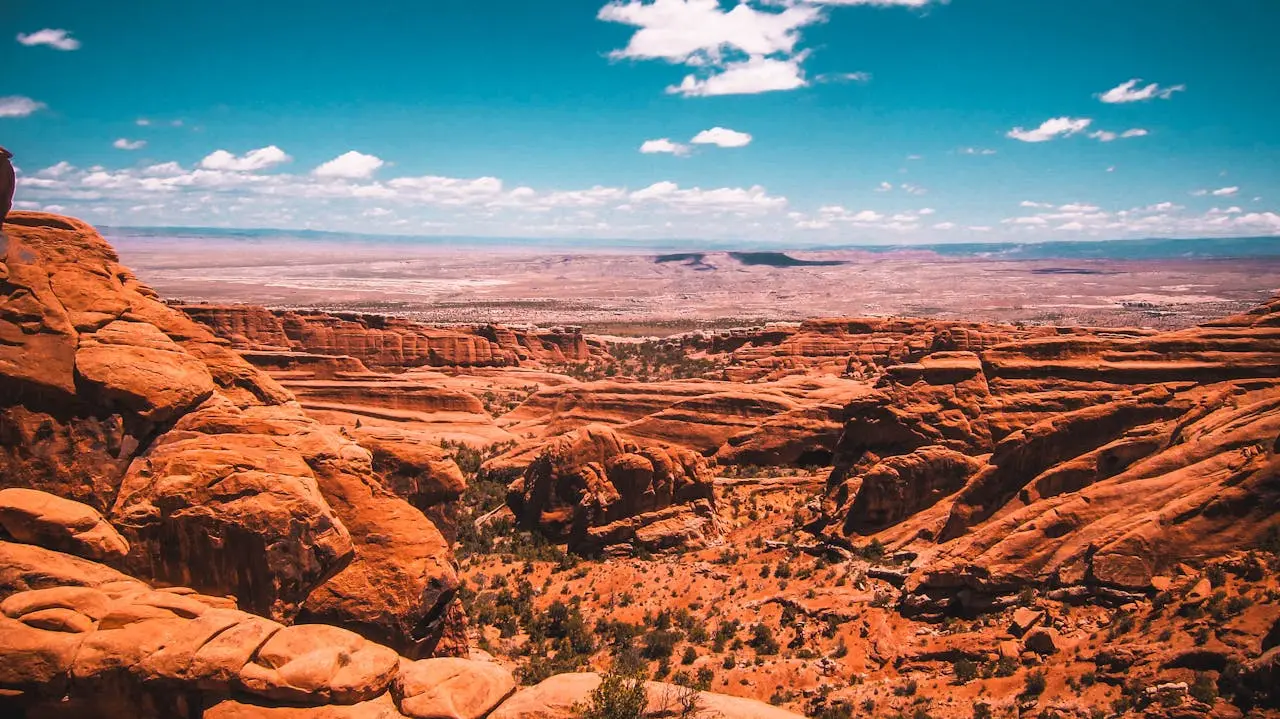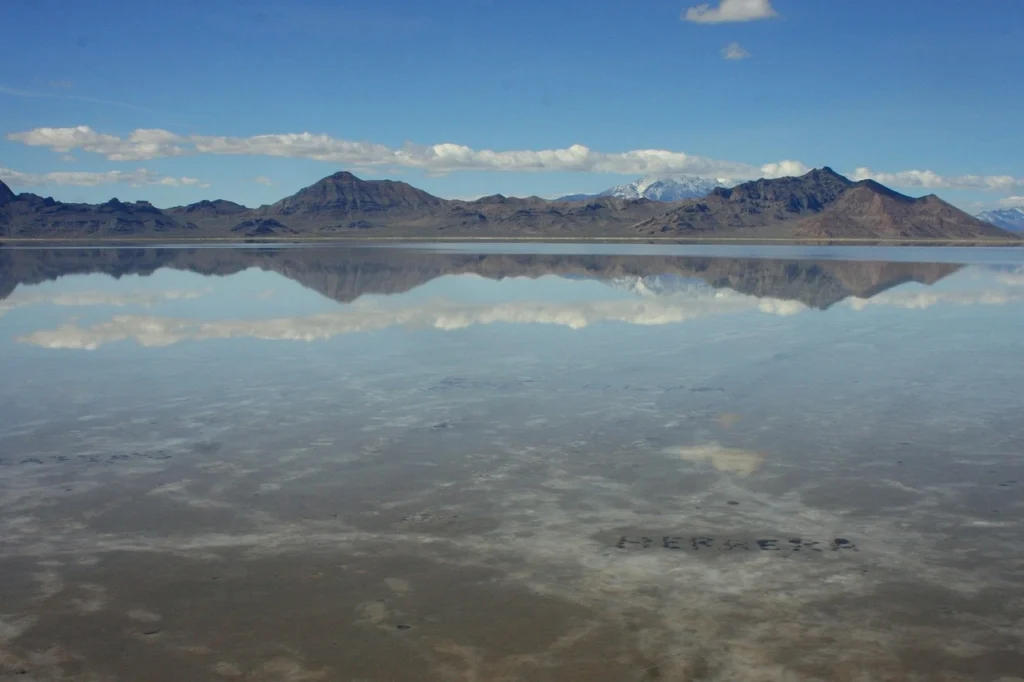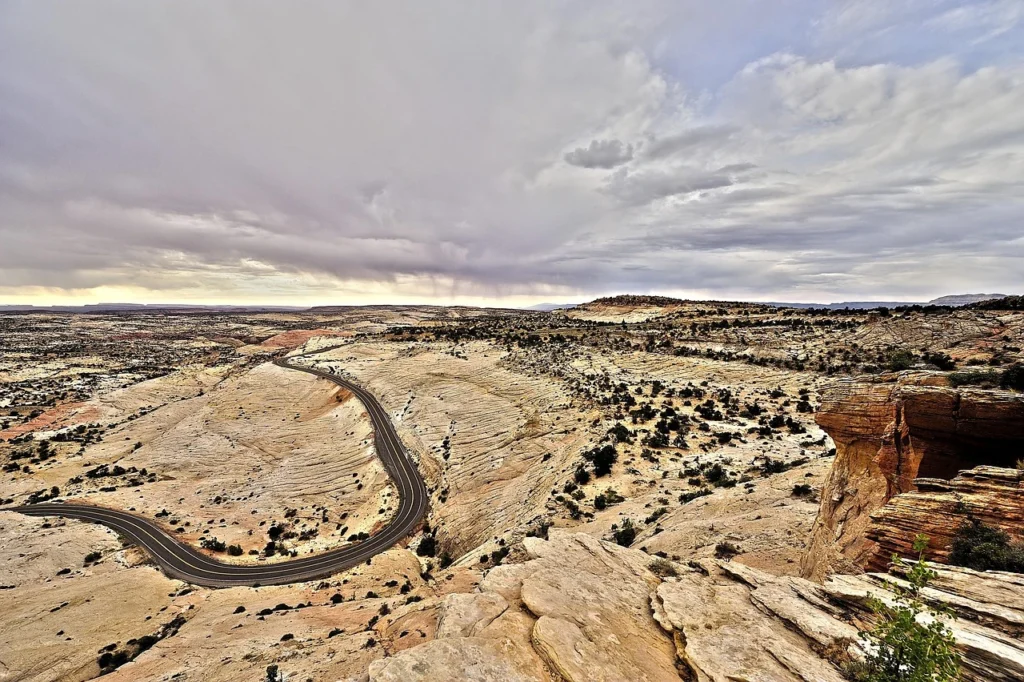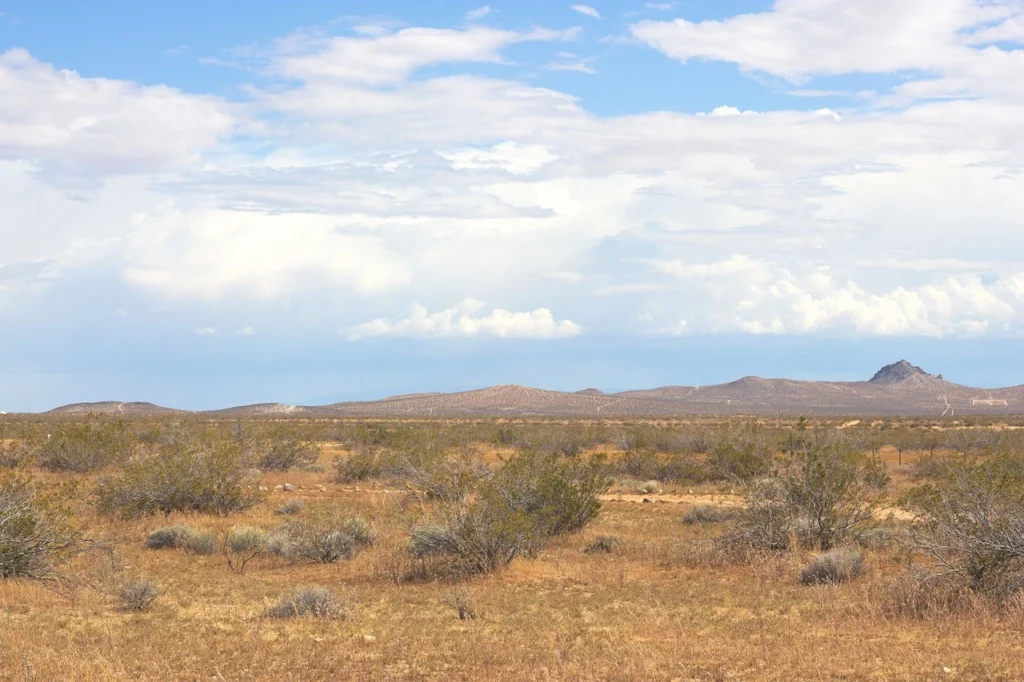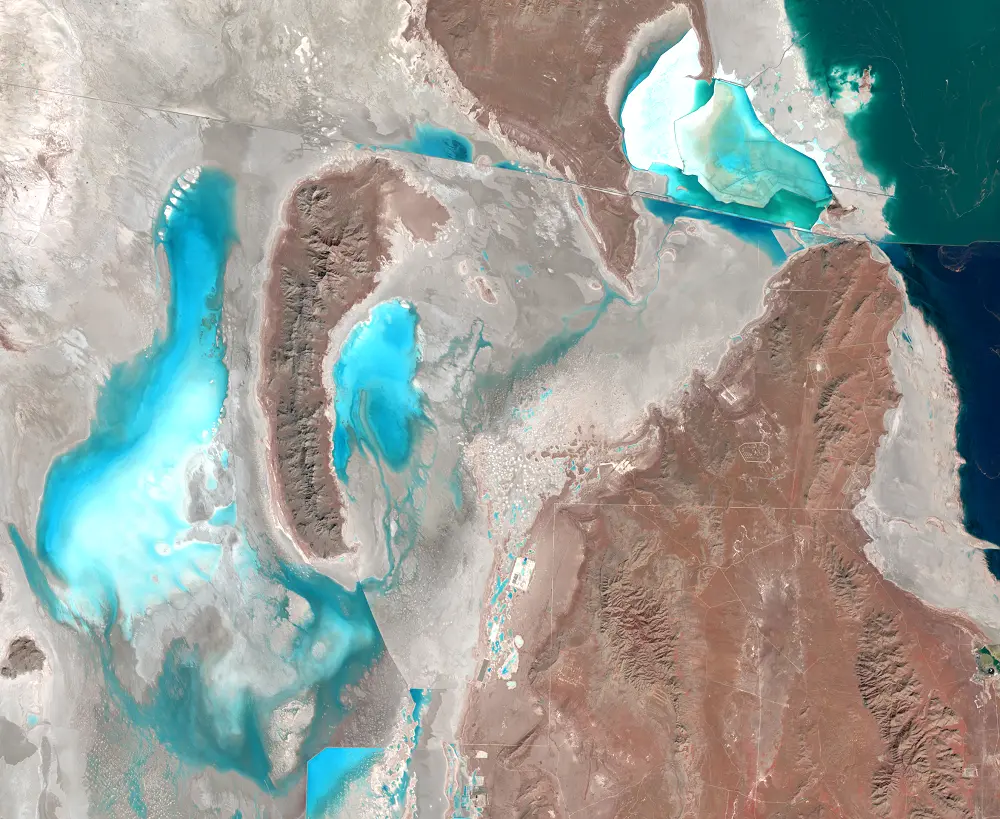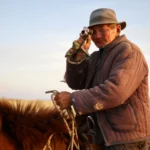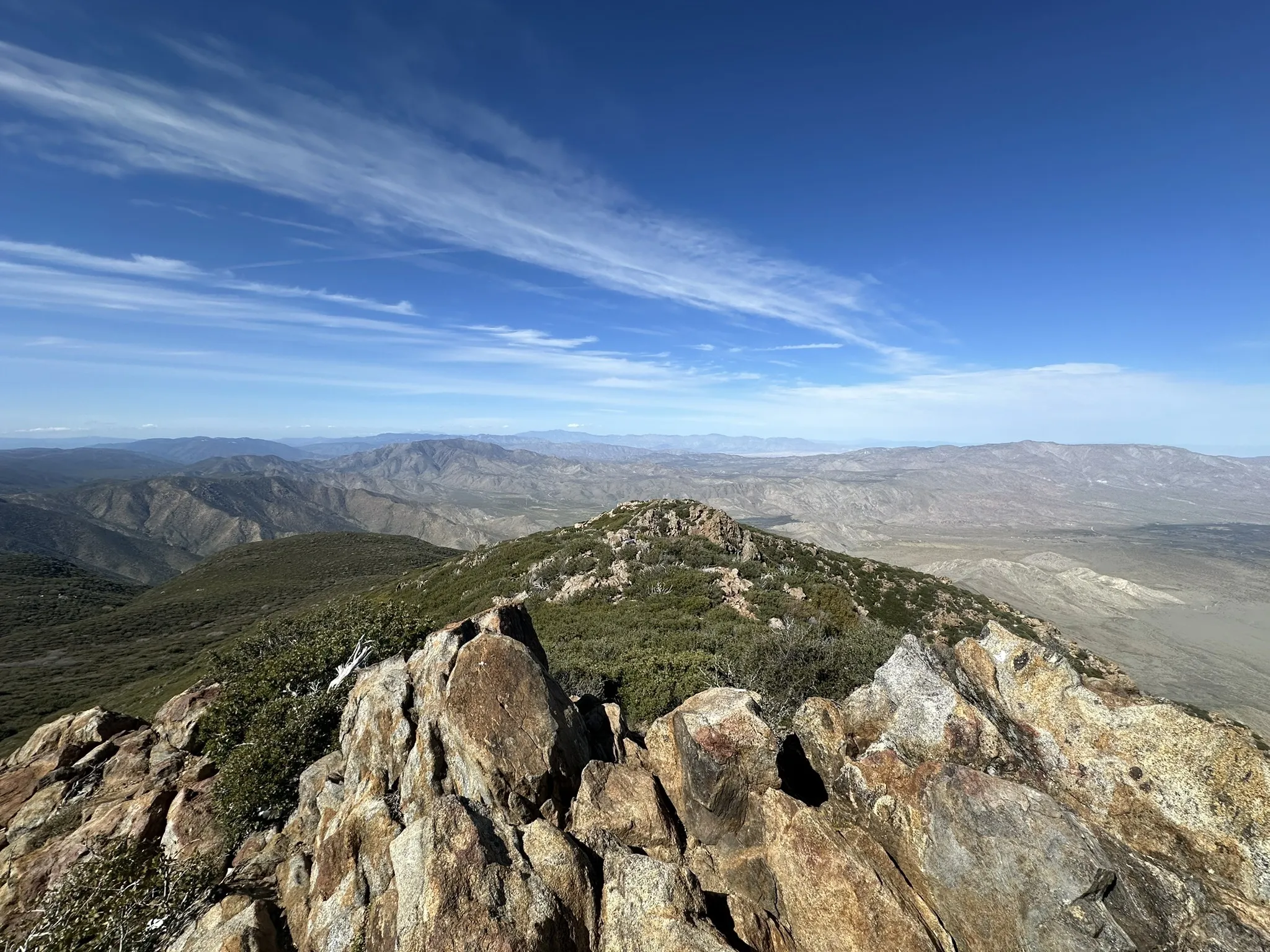When you hear the word “desert”, do you imagine a place that is hot and dry where the only thing you can see for hours is sand? Do you imagine a place where you can get so thirsty and there is no source of water or rain in sight?
If you did, then you’re right. Deserts are basically areas with a low rate of rainfall or snow and a high rate of drying up. To make it worse, Utah, as a state, is the second driest state in the United States, which means you can find deserts almost everywhere here.
But, Utah Deserts make spending time in the deserts worth it with its spectacular features from the geological formations to the hoodos to the salt flats and arches. You’ll be left wondering, why haven’t I been here since? That’s why this list of deserts in Utah has been created for you to explore no matter the season.
List of 8 Utah Deserts You Must Visit
1. Bonneville Salt Flats
The Bonneville Salt Flats is one of the deserts in Utah that is like a densely packed salt pan and is one of the largest salt flats west of the Great Salt Lake. The Salt Flats, known for its land speed records, is estimated to hold 147 million tons of salt, about 90% of which is common table salt.
The salt flats are on the National Register of Historic Places and are designated as an Area of Critical Environmental Concern, so are managed as a Special Recreation Management Area. The Southern California Timing Association and the Utah Salt Flats Racing Association organize and plan multi-vehicle events here. Sometimes, the salt flats are swamped by heavy rains which triggers mudslides from surrounding mountains onto a section of the flats used for the land-speed racing course and leads to the events being canceled.
The salt flats are used for land speed racing, archery competitions, running races, photography, videography, and scientific research projects. If you want to use the salt flats for these purposes, you’ll need a special recreation or film permit from the BLM Salt Lake Field Office.
When you visit, you can attend the annual US Flight Archery Championships where the goal is to shoot arrows from bows at the greatest distance possible. And if you prefer racing, you would love the Bonneville “Speed Week” that takes place mid-August followed by “World of Speed” in September and the “World Finals” that takes place in early October.
2. Escalante Desert
The Escalante Desert is located in the northwestern part of Cedar City in Iron County, close to the Great Basin region, so it’s home to xeric shrublands biomes.
Escalante Petrified Forest State Park found in this Utah desert houses a diverse range of habitats, including the rare wetland of Wide Hollow Reservoir. If you’re into wildlife and nature, you would love exploring this park with its variety of birdlife, with 108 species recorded, including the American kestrel, bald eagle, osprey, and various other waterfowl, raptors, and songbirds.
The Escalante Petrified Forest State Park has a 22-unit campground with basic amenities, including restrooms and a group campsite. Hikers and joggers can decide to go on the Petrified Forest Trail which is a one-mile loop or the Sleeping Rainbows Trail which is an optional 0.75-mile but much steeper and requires scrambling and climbing over rocks.
You can even visit the visitor center to see plant and marine fossils, petrified wood, and fossilized dinosaur bones over 150 million years old. For even more fun activities, you can visit the Wide Hollow Reservoir which is also popular for water sports, such as swimming, boating, and fishing.
3. Great Basin Desert
The Great Basin Desert is a temperate desert with hot dry summers and snowy winters that overlaps the Great Basin shrub steppe and the Central Basin and Range ecoregion. This Utah desert is one of the four biologically defined deserts in North America.
On any given day, the weather in the Great Basin desert is variable and characterized by extremes: hot, dry summers and cold, snowy winters; frigid alpine ridges and warm, windy valleys. This is one of the deserts in Utah that is mountainous, so the temperatures vary depending on the elevation.
The dry climate and rugged topography prove too harsh for many plant and animal species so although the Great Basin Desert has various animals and plants, sixty-three of these species have been identified as species of conservation concern due to contracting natural habitats.
When you visit, you can explore The Great Basin National Park, which is located in a central part of the Great Basin desert. You will love the various scenic features of this park such as the Lexington Arch, the Lehman Orchard and Aqueduct, Rhodes Cabin, Stella and Teresa Lakes, and Wheeler Peak Glacier. Beyond these features, the Great Basin region is home to fascinating geological formations like Wolf Rock Cave, offering visitors glimpses into the area’s ancient history.
4. Great Salt Lake Desert
The Great Salt Lake Desert is a big dry lake located between the Great Salt Lake and the Nevada border, near the Great Basin Desert. This desert is distinguished by white evaporite Lake Bonneville salt deposits, especially the Bonneville Salt Flats.
This is one of Utah’s chilly deserts in the winter, with rare plants that have adapted to the arid climate. Because of its high height and aridity, summer nights are reasonably cool, but winter nights are severely cold, with temperatures frequently plunging below freezing.
You can hike on the various mountains in this Utah desert such as the Cedar Mountains, Lakeside Mountains, Silver Island Mountains, Hogup Mountains, Grassy Montains, and Newfoundland Mountains. There are other places you can explore in this desert such as the military’s Utah Test and Training Range, and if you like fishing you can stop at the Fish Springs Range.
5. Mojave Desert
The Mojave Desert named after the indigenous Mohave people, is located between southeastern California and Nevada with small portions extending into Utah. This desert alongside other deserts in Utah form a larger North American desert.
This desert, generally known as the high desert, has the normal desert basin and range structure, with parallel mountain ranges and valleys. Death Valley, North America’s lowest point, is also located here.
The Mojave Desert is one of the best Utah deserts to come for a vacation, owing to the international destination of Las Vegas. You can also visit Death Valley National Park, Joshua Tree National Park, and Mojave National Preserve.
If youre into water sports, you will love the Lakes Mead, Mohave, and Havasu all in this desert. The Mojave Desert also includes three California State Parks, the Antelope Valley California Poppy Reserve, Saddleback Butte State Park, and Red Rock Canyon State Park. Some other featured attractions can be found in Calico Ghost Town.
The Mojave Desert is one of the protected deserts in Utah due to the California Desert Protection Act. Although the southwest and central east parts are still threatened as a result of off-road vehicles, increasing recreational use, human development, and agricultural grazing.
6. Newfoundland Evaporation Basin
As one of the man-made deserts in Utah, Newfoundland Evaporation Basin is a dry Great Basin watershed in between the Box Elder and Tooele counties. It was created by the State of Utah in June 1986, to hold the excess water from the Great Salt Lake.
For this project, a pumping station at Hogup Ridge, canals, twenty-five miles of dikes, a thirty-seven-mile-long natural gas pipeline, inlets and outlet canals, and an access road were constructed.
In the first year, about 1.5 million acre-feet of water was pumped into the evaporation basin and a dike was built to control the basin’s water level and let salt-rich water flow back into the lake. When the level of the basin rose high enough, some water would travel all the way around the Newfoundland Mountains and back into the lake. Pumping of water into the basin continued until June 1989, after 6 feet of water level decline in the Great Salt Lake.
7. Sevier Desert
Sevier Desert is a large Utah desert located in the southeast of the Great Basin, bordered by various deserts north, west, and south. The Sevier River which flows to the Sevier Lake is found in this desert.
In the north and northwest, the desert is composed of small mountain ranges such as the Dugway Range, the Thomas Range, and the Drum Mountains. This region contains various springs and intermittent reservoirs, Hogback, Crater Bench, and Desert Mountain Reservoir.
The northeast perimeter of this Utah desert lies at the southwest foothills of the East Tintic Mountains, noted for its mining. Tintic Valley, a small valley between the West Tintic Mountains is found in the southwestern part of the Sevier Desert.
The east of the Sevier Desert contains various communities which you can explore lying at the foothills of the mountain ranges. You can also explore the Black Rock Desert volcanic field, the Pahvant Butte, and the Little Sahara Recreation Area.
8. Wyoming Basin Shrub Steppe
The Wyoming Basin shrub-steppe is a Utah desert located within multiple high altitudes and surrounded by various subranges of the Rocky Mountains. This desert has varying temperatures from very cold and long winters to short and hot summers due to it being in the rain shadow of the North American Cordillera.
Though little of this region is protected, it is still largely intact due to the harsh climate and resulting poor agricultural potential. However, heavy livestock grazing, fire suppression, and the introduction of non-native plants have resulted in some areas being significantly altered.
The dominant vegetation in this region is sagebrush due to the shrub-steppe grades in the bordering mountain ecoregions. If you’re into bird watching, you’ll love the sagebrush-dependent bird species such as the greater sage grouse, sagebrush sparrow, and sage thrasher. You can also find exotic mammals such as elks, swift fox, and bison or reptiles such as horned toads, sagebrush lizards, and prairie rattlesnakes.
Conclusion
Utah deserts are a vital resource for humans and are an important ecosystem for plants and animals that inhabit them. Knowing as much about Utah deserts is good so they can remain healthy, be restored, and be used wisely.
Utah deserts are sites of natural beauty, human antiquities, and religious significance so lots of visit or travel to these deserts every year. There are a lot of ways to have fun here including hiking, canyoneering, camping, backpacking, off-roading, bird and animal watching, river rafting, and even fishing. For history enthusiasts, the American Southwest also offers opportunities to explore ancient pyramids in America, adding a cultural dimension to your desert adventure.
The best way to learn about Utah deserts is to spend time here, so maybe you can take a vacation there or travel through during a trip elsewhere. Just take the time to go outside and be in the desert because no matter the season, Utah deserts are unique and beautiful.

